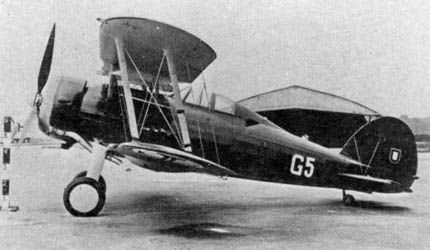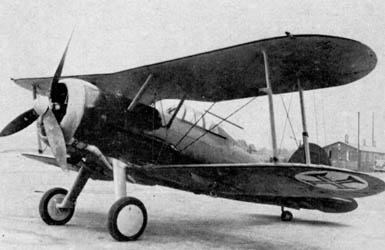

In 1938 the Portuguese Government ordered 15 Gladiator Mk.IIs. The aircraft were assembled in Portugal by OGMA (Oficinas Geriais de Material Aeronautico) in September 1938 with the Portuguese serials 450-464.
The Gladiators equipped one Escadrille de Chasse based at Ota. The same unit also had ten Ju 52/3mg3e bombers, split into two flights (EBN).
The Portuguese Government tried to buy more modern equipment but to avail and further batch of fifteen Gladiators were ordered from Britain. These were ex-RAF aircraft diverted from Air Ministry Contract No. 773235/38. On arrival in Portugal they were allocated the serials 465-479 and formed a new Escadrille de Chasse at Tanco (BA3).
By 1941 the Allies had come to realise the strategic importance of the Azores. These islands would be an ideal base for the operating of maritime reconnaissance aircraft and naval escort vessels. In early 1941 President Roosevelt declared that the islands "represented the eastern frontier of the United States". Alarmed at a possible invasion of the Azores by Allied forces the Portuguese Government sent out land and air units to safeguard the islands.
In June 1941 Escadrihla de Caca Expedicionara No.1 dos Acores was formed with 15 Gladiators. This unit was to be based at Rabo de Peixe airfield on the island of San Miguel. Another unit, Escadrihla de Caca Expedicionara No.2 dos Acores, was also formed and it was intended to operate from Tejas on the island of Terceira. These two bases were eventually designated Base Aerea 4 (Rabo de Peixe) and Base Aerea 5 (Lajes).
By the end of 1943 the Gladiators were at the end of their front line service. Newer aircraft were being supplied by Britain, such as the Hurricane and the Spitfire. The Curtiss Mohawk took over the Gladiators role in the Azores and they were relegated to second line duties.
In 1946 EEC No2 returned to mainland Portugal and were based at Ota with BA2. They were then passed on to Escadrihla No2 Gruppe de Chasse at BA3 at Tancos along side Hurricanes and Magisters.
By 1948 the remaining aircraft were once again in the Azores, this time with Escadrihla No3 Gruppe de Chasse at Lejas (BA4). The start of 1950 saw only seven left in service, these being 459, 461, 464, 466, 469, 476 and 477, based at Tancos back in Portugal. Here they were used for advanced pilot training, mainly in aerobatics.
Source:

Gloster Gladiator Home Page - Alexander Crawford.
The Gloster Gladiator - Francis K. Mason, 1964 Macdonald & Co. Ltd. London
